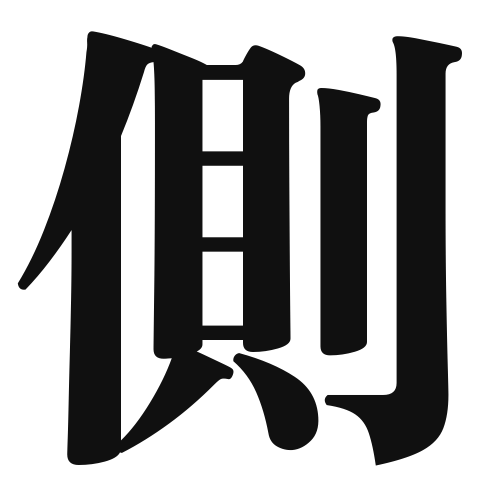1. Overview of Meaning
The kanji “側” (soku) means “side” or “aspect.” It is used to refer to the lateral part of something or to indicate a viewpoint or perspective.
2. Formation and Radical
Formation of the Kanji: The kanji “側” is a compound character that combines elements to convey its meaning. It consists of the radical “𠂉” (which represents a person) and “側” (which relates to the side or aspect).
Radical: The radical for “側” is “側” itself, which is often associated with meanings related to position or side.
3. Examples of Usage
Common Words and Phrases: Some frequently used words that include “側” are:
- 側面 (sokumen) – side, aspect
- 側近 (sokkin) – close aide, confidant
Example Sentences in Daily Conversation:
- この問題の側面を考えましょう。 (Let’s consider the aspects of this issue.)
- 彼は私の側近です。 (He is my close aide.)
4. Synonyms and Antonyms
Similar Kanji: A similar kanji is “面” (men), which means “face” or “surface.” While both refer to aspects, “面” emphasizes the surface or front, whereas “側” focuses on the side or lateral view.
Opposite Kanji: An antonym is “中心” (chūshin), meaning “center.” While “側” refers to the side, “中心” indicates the middle or core of something.
5. Cultural and Historical Background
Relation to Japanese Culture: The concept of “側” is significant in Japanese culture, where perspective and viewpoint are often emphasized in communication and art.
Proverbs and Idioms: An example of an idiom is “側にいる” (soba ni iru), which means “to be by someone’s side,” highlighting the importance of companionship and support in Japanese society.
